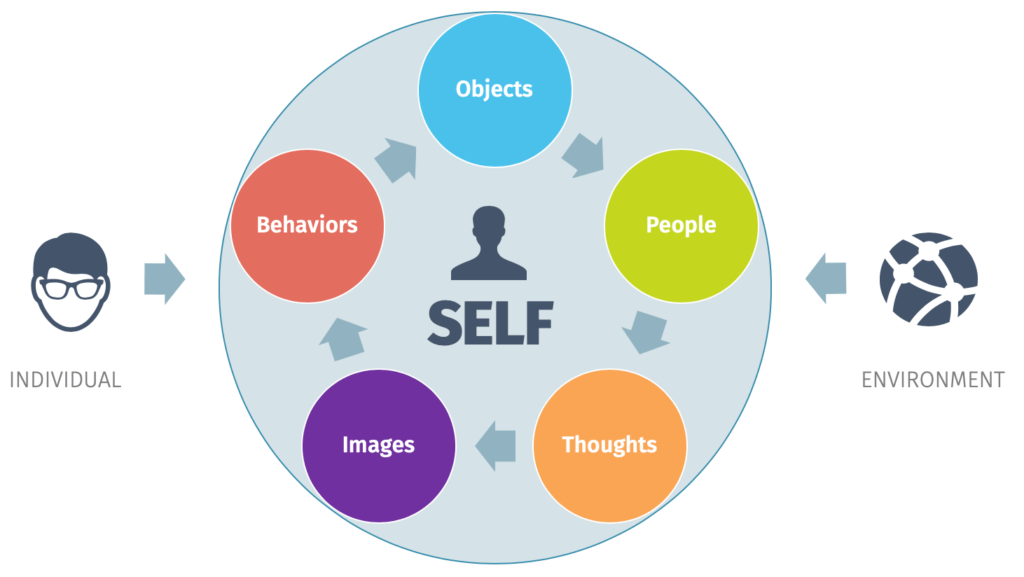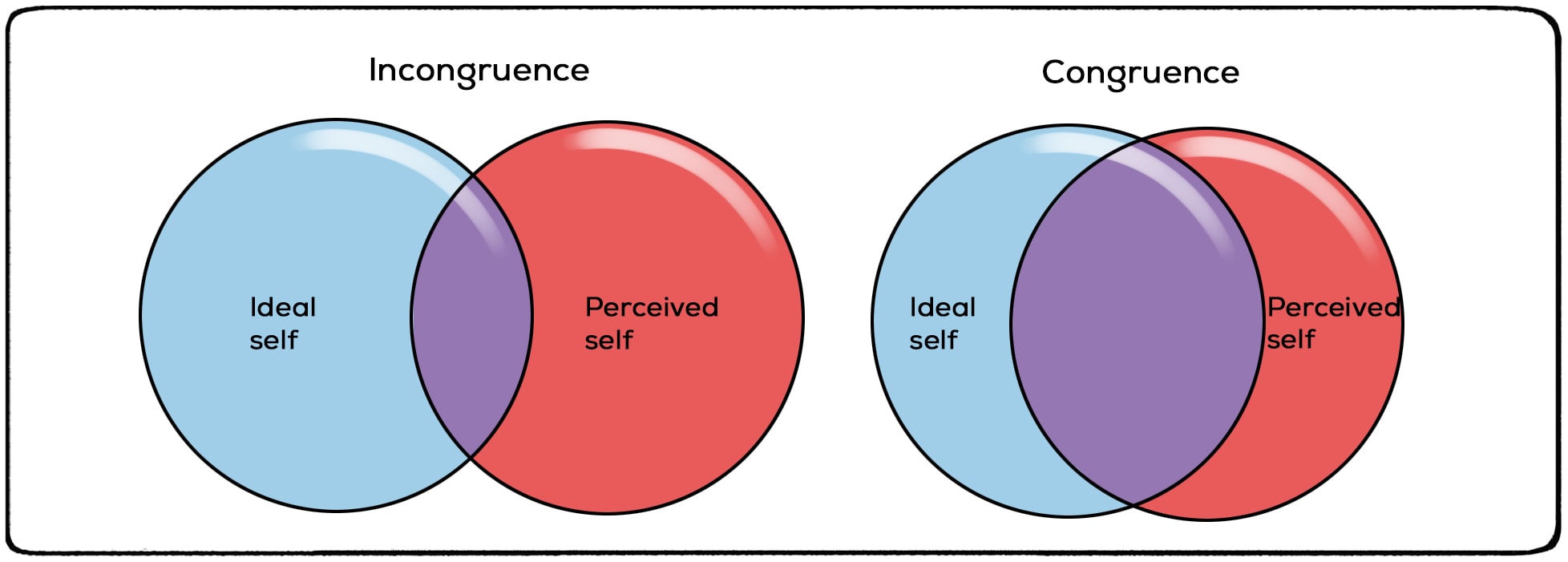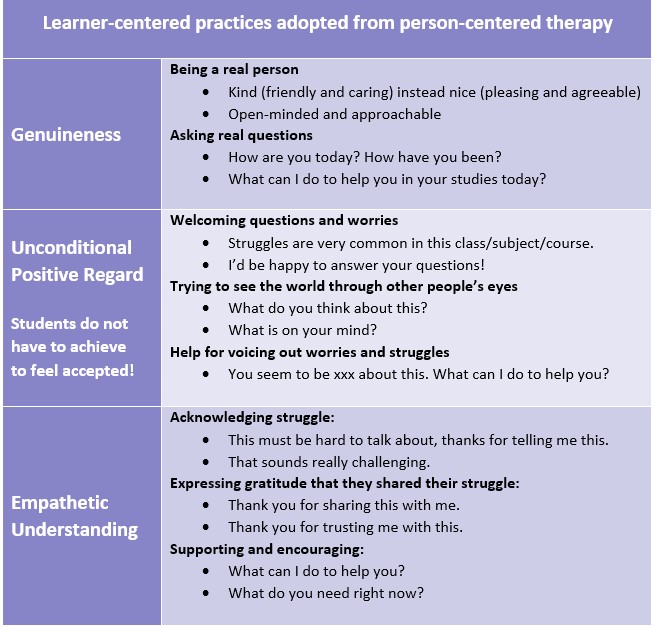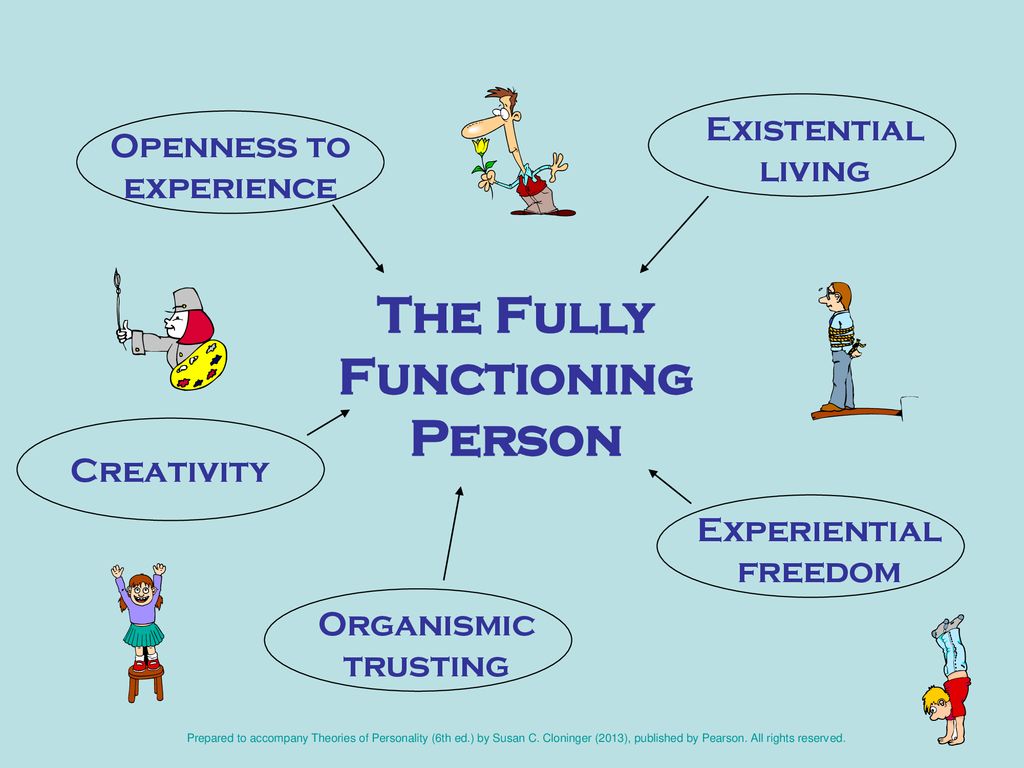Carl Rogers' Theory
What was Carl Rogers' theory of personality development, and does it still have significance for child development?


What was Carl Rogers' theory of personality development, and does it still have significance for child development?
Carl Ransom Rogers (1902 –1987) was a psychologist who developed a theory called Unconditional Positive Regard. He believed that children learn through unconditional acceptance and understanding.
Rogers' theory is based on his own experience working with children. His work focused on helping parents understand their children better and teaching them to accept their children unconditionally.
Rogers was born in 1902 in North Carolina. He attended medical school at Johns Hopkins University and became a doctor. However, he didn't feel fulfilled by his career path. So, he left medicine and began studying psychology.
He eventually moved to California, where he studied with John Dewey and William James. His studies led him to become interested in human behavior and how we learn. His early work included 'On Becoming a Person', 'Anatomy of an Illness, and 'Peaceful Warrior'.
Rogers believed that humans were capable of becoming whole persons through self-discovery. He said that our thoughts, feelings, and actions influence each other. We're not separate entities; rather, we're connected parts of a greater whole.
This philosophy influenced many psychologists who followed him. They called this process "self-actualization." Today, psychologists use the term "personality development" instead of self-actualization.
He wrote several books, including The Human Side of Child Training, The Way Home, and Beyond the Age of Childhood.
Rogers died at age 90, but he left behind a legacy of ideas that continue to influence parenting today.
Rogers' ideas influenced many psychologists and educators during his lifetime, including John Watson, B.F. Skinner, Jean Piaget, Lev Vygotsky, and Maria Montessori. His theories continue to be cited in modern psychology today.
According to Carl Rogers’ humanistic theory of personality development, all humans exist in a world which is loaded with experiences. Their life experiences create their reactions involving external people and objects. Also, internal emotions and thoughts. This is referred to as their phenomenal field. The phenomenal field indicates someone’s thoughts, behaviour, objects, reality, as well as people.
Carl R. Rogers acknowledged that a human’s behaviour is a factor stimulated by the tendencies of self-actualisation to work and accomplish the highest level of their achievement and potential. In this system, people create a self-concept or structure of self. A negative self-concept is associated with making people unhappy with who they are, a positive self-concept will make them feel safe and secure.
The humanistic psychologist Rogers, was a supporter of the founder of positive psychology, Abraham Maslow's humanistic theory of personality. One of the eminent psychologists and a positive psychology expert Abraham Samuel Maslow believed that people gain their full potential by shifting from fundamental needs towards self-actualization. However, Roger's personality theory added that people in their daily lives need an environment with empathy, acceptance and genuineness to grow. According to Carl Rogers, a person attains the level of self-actualization when they accomplish their desires, wishes and goals, at each stage of their life.
As a humanistic psychology leader and positive psychology founder, Abraham Samuel Maslow addressed the study of personality psychology while emphasizing free will and subjective experiences.
Humanistic psychology highlights the role of a person in shaping his external and internal world. Carl Rogers believed that humans in their daily lives are creative and active people who stay in the present and are concerned with situations, interpersonal relationships and perceptions, only in the present. Roger’s theory of personality development gives emphasis to human potential and free will for goodness.
The main difference between both the eminent psychologists' Rogers and Abraham Samuel Maslow is in their humanistic theories of self-actualization. Abraham Samuel Maslow recognizes the functioning of a person in one's own self, but Rogers highlights the need for the environment.

According to Rogers self is divided into 2 categories; real and ideal self. The real self indicates what someone is in real life, and ideal self is what someone wants to become in his life. In real life, people’s ideal self is not consistent with what happens in real life.
In the field of Psychology, the difference between the actual experiences and the actual self is incongruence. Congruence occurs when one's thinking about the ideal self and real self are quite related, i.e. when one's self-concept is accurate and strong. High congruence results in a healthier and more productive life with a higher sense of self-worth.

Self Concept is the belief we hold about ourselves. We believe who we are based on our past experiences, our current circumstances, and our future expectations. Self Concept is not static; it changes over time.
We change our Self Concept when we experience events that affect us emotionally. Carl Rogers believed that Self Concept was influenced by three factors:
1) Our parents' attitudes toward us (our early environment).
2) The beliefs we hold about ourselves (our internal world).
3) Our perceptions of others (the external world).
Carl Rogers developed his theory of Self Concept through his work with patients suffering from emotional disorders. He found that many of these patients had negative feelings about themselves because they held inaccurate beliefs about themselves. These beliefs were often reinforced by their parents.
Rogers concluded that the only way to help these patients overcome their problems was to teach them to question their own beliefs about themselves. This would allow them to develop more accurate beliefs about themselves.
To illustrate this point, let's say you're a teenager who feels inadequate because you've never been able to play sports well. Your parents may reinforce this feeling by telling you that you're too small to be successful at playing basketball.
If you accept this belief, you'll feel bad about yourself and experience negative feelings. But if you challenge this belief by asking yourself positive self-reflective questions, you can address any negativity in a constructive way.
By questioning your beliefs about yourself, you'll gain insight into your Self Concept. And once you understand your Self Concept better, you'll be able to improve it.
The Humanistic psychology expert, Rogers' Unconditional positive regard indicates the attitude of love and complete acceptance, whether for one's own self or for another person. When a person has unconditional positive regard for the other person, nothing the other person can do could give them a reason to stop considering them as inherently lovable and inherently human. This does not indicate that people will accept all the acts of that person, but that they accept who that person is at a much deeper level than the surface level.
Rogers' unconditional positive regard is an important concept in positive psychology and the growth model of therapy. It is also a significant contribution of therapists who use a humanistic approach in counseling.
The therapeutic personality is seen as a key factor in the success of therapy, and unconditional positive regard is one of the factors of empathy that contribute to a positive therapeutic relationship. In fact, Rogers believed that the therapist's unconditional positive regard for their client was more important than any specific technique or intervention.
Unconditional positive regard allows the client to feel accepted and valued, even in the face of difficult or uncomfortable feelings. It creates a safe space for the client to explore their thoughts and emotions without fear of judgment or rejection.
In practice, unconditional positive regard requires the therapist to cultivate a non-judgmental attitude and to genuinely value and accept their client as a human being. This can be challenging, especially when the client's behavior or attitudes may be contrary to the therapist's personal values or beliefs.
Despite its challenges, unconditional positive regard remains a cornerstone of humanistic therapy and an important factor in promoting personal growth and positive change. It has made a significant impact on the field of counseling and continues to be a valuable contribution to the helping professions.

Rogers describes a fully functioning person as someone with the following criteria:
According to Rogers, a humanistic approach to becoming a fully functioning person would be living "the good life" in the above criteria. Let's explore what he meant:
1. A growing openness to experience
Rogers described this as accepting someone's life experiences without getting defensive or feeling psychological distress for being psychologically or emotionally attacked.
2. An increasingly existential lifestyle
It indicates not enabling past experiences to change a person's response. An increasingly existential lifestyle in the field of Psychology indicates relishing the moment. For instance, a person enjoys driving so a car accident would not stop him from driving. The person will continue to enjoy driving through implementing the principle of an increasingly existential lifestyle.
3. Increasing organismic trust
Carl Rogers states that increasing organismic trust occurs when the client demonstrates the self-trust to make correct choices in various social situations. Rogers' theory also suggested that the client would take up a suitable moral compass and have a code of ethics to take these decisions.
4. Freedom of choice
Carl Rogers humanistic theory about freedom of choice proposed that Roger's clients could understand how to respond to situations. Freedom of choice indicates that people's reactions are in control, practising the appropriate emotional intelligence. Freedom of choice is also governed by the client's individual moral code. Freedom of choice also means that the client takes responsibility for his conduct.
5. Creativity
Carl Rogers described creativity as the knowledge to adapt to a situation appropriately. Rogers gives the example of a teacher who is introverted but decides to become extroverted in her instructions. This creativity and adaptation would not make any substantial changes in the teacher's personality but allows him to adapt to the situation in a creative manner.
6. Reliability and constructiveness
According to Carl Rogers' theory of personality about reliability and constructiveness, people might achieve a balance between their real self and ideal self. Self-worth is an additional element of this balance. An increased level of congruence is needed between the self-worth, real self, and ideal self. A person with an increased level of self-worth values himself and can be gracious while getting a compliment. This person may also accept and relish the compliment with a greater degree of self-worth. To achieve congruence between the real self and the ideal self, a person needs to practice with the real self on daily basis to collide with the ideal self in the future. An example of an ideal self would be a person who enjoys driving a car on the snow using promising all-weather tires giving more grip in the future. But, to achieve congruence with the real self, the real self will ensure to buy all-weather tires, before the first snowfall. Hence, the real self will ultimately collide with the ideal self at the time of the first heavy snowfall.
7. Living a rich, full life
Carl Rogers suggests that a fully-functioning person experiences pain and joy, heartbreak and love and, courage and fear more intensely. In other words, a rich, full life includes intense experiences of the negative and positive aspects of everyday life. For instance, a person who performs better at work, while living a rich, full life with sufficient conditions might be more inclined to receive praise from the boss. The same employee with sufficient conditions in life would also feel more psychological distress at the time of losing his employment or breaking up with a friend as compared to a person who has never experienced a rich, full life.

In Client-Centered Therapy, Carl Rogers explained the approach to education and in 1969 composed Freedom to Learn on this subject. Rogers' approach to education favours student-centred learning. According to his approach to education, students learn to face the future through a classroom environment where they can solve real-world problems and learn to think critically.
Student-centered learning (SCL) is a teaching method where students take control over their own learning. Students learn at their own pace, work independently, and use their creativity to solve problems. SCL encourages self-directed learning and promotes critical thinking skills.
The theory behind this type of pedagogy is that Students who practice SCL can become independent learners, able to adapt to changing situations and find solutions to complex problems. They develop confidence in their ability to succeed.
To be successful, teachers must understand the principles of SCL and incorporate them into their classroom practices. This includes providing ample opportunities for students to explore ideas, express opinions, and collaborate with others.
SCL is not just for elementary school children. It's used throughout the entire educational system, including college classrooms.

In Clinical Psychology a Person-centered approach is also referred to as client-centered therapy or Rogerian therapy utilizes a non-authoritative approach that enables clients to take lead in sessions, which allows them to explore their own solutions.
Rogers' client-centred therapy approach emerged in a Clinical Psychology study of American psychology and concluded that every individual is unique and, thus, everyone’s perception of his own world, and his ability to handle it, must be trusted. Rogers was a supporter of self-actualization, which means every person has the ability to find the best solutions for himself and the ability to make appropriate modifications in his everyday life. Rogers initially named his client-centred approach to therapy as non-directive therapy, because this therapeutic approach required the therapist to maintain a therapeutic relationship in which the therapist attends to the client’s lead rather than the direct discussion.
In Carl Rogers' humanistic psychology, client-centred therapy while building a therapeutic relationship, the therapist acknowledges the experiences of client, listens to the client without judgment, and works as a compassionate facilitator, without changing the direction of the conversation. The therapist with the person-centred approach is meant to support and encourage the client without interfering or interrupting with the client's process of self-discovery, as in Client-Centered Therapy, the client reveals what is wrong and what is needed to fix everything.
Unlike other therapy methods, such as cognitive-behavioral therapy or the engagement of gestalt therapy, person-centered therapy focuses on the individual rather than the symptoms. Carl Rogers' person-centered psychology emphasizes the importance of building a therapeutic relationship based on empathy, respect, and authenticity. The therapist's role is to support and encourage the client's self-discovery process without interrupting or changing the direction of the conversation.
Rogers believed in self-actualization, the idea that every individual has the ability to find the best solutions for themselves and make appropriate modifications in their everyday life. In person-centered therapy, the therapist trusts the client's ability to handle their own problems and works as a compassionate facilitator. This approach has made Carl Rogers one of the most influential psychologists of the 20th century and his legacy continues to impact the field of psychology today.
Rogers' theories were influenced by Sigmund Freud and Alfred Adler. They had similar views on the importance of understanding yourself. However, Rogers thought that these theories didn't go far enough. He wanted to help people understand their feelings and emotions.
Rogers believed that everyone wants to be happy. But many people struggle to achieve happiness because they're not aware of who they truly are. To find out who you are, you need to learn about yourself.
In conclusion, Carl Rogers was a psychologist who believed that everyone had the potential to heal themselves. He also believed that if someone wanted to improve their mental state, they should first look within themselves to find out why they were feeling bad.
This approach allowed him to develop his famous client-centered therapy, which he used to treat patients suffering from depression, anxiety, and phobias. His work continues to influence psychologists today.
Rogers believed there are four basic needs that drive human behavior. These needs are safety, belongingness, self-esteem, and freedom. People strive to meet these needs.
People often try to fill their lives with things that give them pleasure. But when they fail to satisfy these needs, they may experience stress. Stress causes unhappiness.

These studies collectively demonstrate the enduring impact of Carl Rogers' theories on therapy, emphasizing the importance of empathy, genuine relationships, and client autonomy in promoting personal growth and effective therapeutic outcomes.
1. Client-Centered Therapy (M. Witty, 2007)
Summary: This study elaborates on Carl Rogers' client-centered therapy, emphasizing the importance of empathy, genuineness, and unconditional positive regard in fostering personal growth and effective interpersonal relationships.
Outline: The paper discusses the development and global adoption of the person-centered approach, detailing its applications across different settings and its foundational role in the humanistic approach to therapy and clinical psychology.
2. Towards a person-centred cognitive behaviour therapy (N. Josefowitz & D. Myran, 2005)
Summary: The paper explores integrating Carl Rogers' person-centered therapy principles with cognitive behavioral therapy, highlighting how empathy, acceptance,
Carl Ransom Rogers (1902 –1987) was a psychologist who developed a theory called Unconditional Positive Regard. He believed that children learn through unconditional acceptance and understanding.
Rogers' theory is based on his own experience working with children. His work focused on helping parents understand their children better and teaching them to accept their children unconditionally.
Rogers was born in 1902 in North Carolina. He attended medical school at Johns Hopkins University and became a doctor. However, he didn't feel fulfilled by his career path. So, he left medicine and began studying psychology.
He eventually moved to California, where he studied with John Dewey and William James. His studies led him to become interested in human behavior and how we learn. His early work included 'On Becoming a Person', 'Anatomy of an Illness, and 'Peaceful Warrior'.
Rogers believed that humans were capable of becoming whole persons through self-discovery. He said that our thoughts, feelings, and actions influence each other. We're not separate entities; rather, we're connected parts of a greater whole.
This philosophy influenced many psychologists who followed him. They called this process "self-actualization." Today, psychologists use the term "personality development" instead of self-actualization.
He wrote several books, including The Human Side of Child Training, The Way Home, and Beyond the Age of Childhood.
Rogers died at age 90, but he left behind a legacy of ideas that continue to influence parenting today.
Rogers' ideas influenced many psychologists and educators during his lifetime, including John Watson, B.F. Skinner, Jean Piaget, Lev Vygotsky, and Maria Montessori. His theories continue to be cited in modern psychology today.
According to Carl Rogers’ humanistic theory of personality development, all humans exist in a world which is loaded with experiences. Their life experiences create their reactions involving external people and objects. Also, internal emotions and thoughts. This is referred to as their phenomenal field. The phenomenal field indicates someone’s thoughts, behaviour, objects, reality, as well as people.
Carl R. Rogers acknowledged that a human’s behaviour is a factor stimulated by the tendencies of self-actualisation to work and accomplish the highest level of their achievement and potential. In this system, people create a self-concept or structure of self. A negative self-concept is associated with making people unhappy with who they are, a positive self-concept will make them feel safe and secure.
The humanistic psychologist Rogers, was a supporter of the founder of positive psychology, Abraham Maslow's humanistic theory of personality. One of the eminent psychologists and a positive psychology expert Abraham Samuel Maslow believed that people gain their full potential by shifting from fundamental needs towards self-actualization. However, Roger's personality theory added that people in their daily lives need an environment with empathy, acceptance and genuineness to grow. According to Carl Rogers, a person attains the level of self-actualization when they accomplish their desires, wishes and goals, at each stage of their life.
As a humanistic psychology leader and positive psychology founder, Abraham Samuel Maslow addressed the study of personality psychology while emphasizing free will and subjective experiences.
Humanistic psychology highlights the role of a person in shaping his external and internal world. Carl Rogers believed that humans in their daily lives are creative and active people who stay in the present and are concerned with situations, interpersonal relationships and perceptions, only in the present. Roger’s theory of personality development gives emphasis to human potential and free will for goodness.
The main difference between both the eminent psychologists' Rogers and Abraham Samuel Maslow is in their humanistic theories of self-actualization. Abraham Samuel Maslow recognizes the functioning of a person in one's own self, but Rogers highlights the need for the environment.

According to Rogers self is divided into 2 categories; real and ideal self. The real self indicates what someone is in real life, and ideal self is what someone wants to become in his life. In real life, people’s ideal self is not consistent with what happens in real life.
In the field of Psychology, the difference between the actual experiences and the actual self is incongruence. Congruence occurs when one's thinking about the ideal self and real self are quite related, i.e. when one's self-concept is accurate and strong. High congruence results in a healthier and more productive life with a higher sense of self-worth.

Self Concept is the belief we hold about ourselves. We believe who we are based on our past experiences, our current circumstances, and our future expectations. Self Concept is not static; it changes over time.
We change our Self Concept when we experience events that affect us emotionally. Carl Rogers believed that Self Concept was influenced by three factors:
1) Our parents' attitudes toward us (our early environment).
2) The beliefs we hold about ourselves (our internal world).
3) Our perceptions of others (the external world).
Carl Rogers developed his theory of Self Concept through his work with patients suffering from emotional disorders. He found that many of these patients had negative feelings about themselves because they held inaccurate beliefs about themselves. These beliefs were often reinforced by their parents.
Rogers concluded that the only way to help these patients overcome their problems was to teach them to question their own beliefs about themselves. This would allow them to develop more accurate beliefs about themselves.
To illustrate this point, let's say you're a teenager who feels inadequate because you've never been able to play sports well. Your parents may reinforce this feeling by telling you that you're too small to be successful at playing basketball.
If you accept this belief, you'll feel bad about yourself and experience negative feelings. But if you challenge this belief by asking yourself positive self-reflective questions, you can address any negativity in a constructive way.
By questioning your beliefs about yourself, you'll gain insight into your Self Concept. And once you understand your Self Concept better, you'll be able to improve it.
The Humanistic psychology expert, Rogers' Unconditional positive regard indicates the attitude of love and complete acceptance, whether for one's own self or for another person. When a person has unconditional positive regard for the other person, nothing the other person can do could give them a reason to stop considering them as inherently lovable and inherently human. This does not indicate that people will accept all the acts of that person, but that they accept who that person is at a much deeper level than the surface level.
Rogers' unconditional positive regard is an important concept in positive psychology and the growth model of therapy. It is also a significant contribution of therapists who use a humanistic approach in counseling.
The therapeutic personality is seen as a key factor in the success of therapy, and unconditional positive regard is one of the factors of empathy that contribute to a positive therapeutic relationship. In fact, Rogers believed that the therapist's unconditional positive regard for their client was more important than any specific technique or intervention.
Unconditional positive regard allows the client to feel accepted and valued, even in the face of difficult or uncomfortable feelings. It creates a safe space for the client to explore their thoughts and emotions without fear of judgment or rejection.
In practice, unconditional positive regard requires the therapist to cultivate a non-judgmental attitude and to genuinely value and accept their client as a human being. This can be challenging, especially when the client's behavior or attitudes may be contrary to the therapist's personal values or beliefs.
Despite its challenges, unconditional positive regard remains a cornerstone of humanistic therapy and an important factor in promoting personal growth and positive change. It has made a significant impact on the field of counseling and continues to be a valuable contribution to the helping professions.

Rogers describes a fully functioning person as someone with the following criteria:
According to Rogers, a humanistic approach to becoming a fully functioning person would be living "the good life" in the above criteria. Let's explore what he meant:
1. A growing openness to experience
Rogers described this as accepting someone's life experiences without getting defensive or feeling psychological distress for being psychologically or emotionally attacked.
2. An increasingly existential lifestyle
It indicates not enabling past experiences to change a person's response. An increasingly existential lifestyle in the field of Psychology indicates relishing the moment. For instance, a person enjoys driving so a car accident would not stop him from driving. The person will continue to enjoy driving through implementing the principle of an increasingly existential lifestyle.
3. Increasing organismic trust
Carl Rogers states that increasing organismic trust occurs when the client demonstrates the self-trust to make correct choices in various social situations. Rogers' theory also suggested that the client would take up a suitable moral compass and have a code of ethics to take these decisions.
4. Freedom of choice
Carl Rogers humanistic theory about freedom of choice proposed that Roger's clients could understand how to respond to situations. Freedom of choice indicates that people's reactions are in control, practising the appropriate emotional intelligence. Freedom of choice is also governed by the client's individual moral code. Freedom of choice also means that the client takes responsibility for his conduct.
5. Creativity
Carl Rogers described creativity as the knowledge to adapt to a situation appropriately. Rogers gives the example of a teacher who is introverted but decides to become extroverted in her instructions. This creativity and adaptation would not make any substantial changes in the teacher's personality but allows him to adapt to the situation in a creative manner.
6. Reliability and constructiveness
According to Carl Rogers' theory of personality about reliability and constructiveness, people might achieve a balance between their real self and ideal self. Self-worth is an additional element of this balance. An increased level of congruence is needed between the self-worth, real self, and ideal self. A person with an increased level of self-worth values himself and can be gracious while getting a compliment. This person may also accept and relish the compliment with a greater degree of self-worth. To achieve congruence between the real self and the ideal self, a person needs to practice with the real self on daily basis to collide with the ideal self in the future. An example of an ideal self would be a person who enjoys driving a car on the snow using promising all-weather tires giving more grip in the future. But, to achieve congruence with the real self, the real self will ensure to buy all-weather tires, before the first snowfall. Hence, the real self will ultimately collide with the ideal self at the time of the first heavy snowfall.
7. Living a rich, full life
Carl Rogers suggests that a fully-functioning person experiences pain and joy, heartbreak and love and, courage and fear more intensely. In other words, a rich, full life includes intense experiences of the negative and positive aspects of everyday life. For instance, a person who performs better at work, while living a rich, full life with sufficient conditions might be more inclined to receive praise from the boss. The same employee with sufficient conditions in life would also feel more psychological distress at the time of losing his employment or breaking up with a friend as compared to a person who has never experienced a rich, full life.

In Client-Centered Therapy, Carl Rogers explained the approach to education and in 1969 composed Freedom to Learn on this subject. Rogers' approach to education favours student-centred learning. According to his approach to education, students learn to face the future through a classroom environment where they can solve real-world problems and learn to think critically.
Student-centered learning (SCL) is a teaching method where students take control over their own learning. Students learn at their own pace, work independently, and use their creativity to solve problems. SCL encourages self-directed learning and promotes critical thinking skills.
The theory behind this type of pedagogy is that Students who practice SCL can become independent learners, able to adapt to changing situations and find solutions to complex problems. They develop confidence in their ability to succeed.
To be successful, teachers must understand the principles of SCL and incorporate them into their classroom practices. This includes providing ample opportunities for students to explore ideas, express opinions, and collaborate with others.
SCL is not just for elementary school children. It's used throughout the entire educational system, including college classrooms.

In Clinical Psychology a Person-centered approach is also referred to as client-centered therapy or Rogerian therapy utilizes a non-authoritative approach that enables clients to take lead in sessions, which allows them to explore their own solutions.
Rogers' client-centred therapy approach emerged in a Clinical Psychology study of American psychology and concluded that every individual is unique and, thus, everyone’s perception of his own world, and his ability to handle it, must be trusted. Rogers was a supporter of self-actualization, which means every person has the ability to find the best solutions for himself and the ability to make appropriate modifications in his everyday life. Rogers initially named his client-centred approach to therapy as non-directive therapy, because this therapeutic approach required the therapist to maintain a therapeutic relationship in which the therapist attends to the client’s lead rather than the direct discussion.
In Carl Rogers' humanistic psychology, client-centred therapy while building a therapeutic relationship, the therapist acknowledges the experiences of client, listens to the client without judgment, and works as a compassionate facilitator, without changing the direction of the conversation. The therapist with the person-centred approach is meant to support and encourage the client without interfering or interrupting with the client's process of self-discovery, as in Client-Centered Therapy, the client reveals what is wrong and what is needed to fix everything.
Unlike other therapy methods, such as cognitive-behavioral therapy or the engagement of gestalt therapy, person-centered therapy focuses on the individual rather than the symptoms. Carl Rogers' person-centered psychology emphasizes the importance of building a therapeutic relationship based on empathy, respect, and authenticity. The therapist's role is to support and encourage the client's self-discovery process without interrupting or changing the direction of the conversation.
Rogers believed in self-actualization, the idea that every individual has the ability to find the best solutions for themselves and make appropriate modifications in their everyday life. In person-centered therapy, the therapist trusts the client's ability to handle their own problems and works as a compassionate facilitator. This approach has made Carl Rogers one of the most influential psychologists of the 20th century and his legacy continues to impact the field of psychology today.
Rogers' theories were influenced by Sigmund Freud and Alfred Adler. They had similar views on the importance of understanding yourself. However, Rogers thought that these theories didn't go far enough. He wanted to help people understand their feelings and emotions.
Rogers believed that everyone wants to be happy. But many people struggle to achieve happiness because they're not aware of who they truly are. To find out who you are, you need to learn about yourself.
In conclusion, Carl Rogers was a psychologist who believed that everyone had the potential to heal themselves. He also believed that if someone wanted to improve their mental state, they should first look within themselves to find out why they were feeling bad.
This approach allowed him to develop his famous client-centered therapy, which he used to treat patients suffering from depression, anxiety, and phobias. His work continues to influence psychologists today.
Rogers believed there are four basic needs that drive human behavior. These needs are safety, belongingness, self-esteem, and freedom. People strive to meet these needs.
People often try to fill their lives with things that give them pleasure. But when they fail to satisfy these needs, they may experience stress. Stress causes unhappiness.

These studies collectively demonstrate the enduring impact of Carl Rogers' theories on therapy, emphasizing the importance of empathy, genuine relationships, and client autonomy in promoting personal growth and effective therapeutic outcomes.
1. Client-Centered Therapy (M. Witty, 2007)
Summary: This study elaborates on Carl Rogers' client-centered therapy, emphasizing the importance of empathy, genuineness, and unconditional positive regard in fostering personal growth and effective interpersonal relationships.
Outline: The paper discusses the development and global adoption of the person-centered approach, detailing its applications across different settings and its foundational role in the humanistic approach to therapy and clinical psychology.
2. Towards a person-centred cognitive behaviour therapy (N. Josefowitz & D. Myran, 2005)
Summary: The paper explores integrating Carl Rogers' person-centered therapy principles with cognitive behavioral therapy, highlighting how empathy, acceptance,